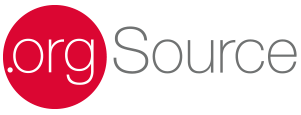Flat, Tall, or In Between—Is It Time to Evaluate Your Organizational Structure?

Even small associations tend to stack layers of management like the cake at a royal wedding. As many as five tiers of responsibility (junior positions, middle managers, executive staff, committees, and the board of directors) are not unusual.
Depending on the circumstances, these levels either promote efficiency with short, clearly defined reporting lines or create a long, perilous climb before ideas reach decision-makers. In my experience, the latter is the more common scenario.
That steep trajectory isn’t a good fit with the speed of innovation required to navigate digital markets. By the time a new direction is approved, the plan may already be out of date.
We all understand that technology has changed business. Most groups have invested in improved systems and platforms, and some have adjusted their strategy to maximize the new equipment. But that’s often the extent of the update.
The organization may still be boxed into a structure that’s been the same for 20 years or more. It’s a little like skiing a black diamond with up-to-date clothing and skis from the previous century. You can do it. But you’ll be faster, safer, and more comfortable when your entire outfit is right for the moment.
Know the Signs
How do you know that your organizational structure might need retooling? These are telltale signs:
- Your strategy has changed. You are ready to add new categories of membership, sell products to a different audience, expand programs, or even revise the business model.
- Remote work is challenging teams. You are struggling to make old procedures fit new formats.
- Departments are not communicating efficiently. Initiatives are undermined by silos, turf wars, and poor collaboration.
- The executive team is stretched too thin. Upper-level managers don’t have the bandwidth to vet or supervise new projects.
- New hires don’t engage. Investments in recruitment are not paying long-term dividends.
- Putting out fires distracts from supporting ongoing initiatives. Chaos in daily operations is diverting attention from strengthening important programs.
Each of these issues could signal that a more streamlined organizational structure is needed. I’m not suggesting that you level the cake. No matter how expertly executed, switching roles and responsibilities is disruptive. Every change doesn’t need to happen at once. You can take baby steps and evaluate which strategies are successful and which are not.
Understand the Options
In a flat organization, the distance between the CEO and junior employees is minimal. Typically, there are no middle managers. Zappos, Square Space, and the Morning Star Company are examples of larger organizations with a flat structure or holacracy.

At Zappos, this arrangement is designed to reflect the company’s values and culture. Gustavo Rasetti, CEO of Fearless Culture, describes Zappos relationship between culture and structure like this.
“Happiness is at the core of Zappos culture. Great culture leads to employee happiness; happy employees drive higher engagement and profitability, and low turnover.
“Zappos has a customer-centric culture, as expressed in its purpose and core values. As the company started to grow, having a clear foundation and keeping it alive and well, was a key component of Zappos’ business success.
“As part of managing growth and scaling the business, Zappos adopted the Holacracy constitution. Tony Hsieh opted for a big bang approach and almost radically implemented self-organization.
The adoption of Holacracy encouraged autonomy and distributed authority, key pillars today. Managers were eliminated, and titles were replaced by roles, while departments were reorganized into circles.”
Circles are probably not going to supplant the pyramid in most Associations. However, there are takeaways from the holacracy that can help any organization become more nimble, innovative, and customer/employee-centric—all traits associated with digital transformation and success in digital markets. A flatter organization encourages behaviors, like these, that energize stale thinking and promote employee engagement:
- Employees take greater responsibility for success.
- Teams are engaged and proud of their work.
- All staff members are empowered to contribute ideas.
- Collaboration among business units is facilitated and encouraged.
- The focus is on responsibilities and not titles.
Clarify Roles
That last bullet is particularly important. Updating roles is a good place to begin promoting the flow of knowledge, ideas, and information across your association. The dynamic between volunteer leaders and the staff is a common bottleneck. But with the right guidance, that relationship can be redefined to maximize its potential.

.orgSource consultant Sharon Rice helped board members of the California IT in Education Association (CITE) make the transition from a hands-on to a leadership orientation.
“During a development retreat in February of 2020, the board discussed various governance models and how they could shift perspective to maximize CITE’s potential,” Sharon recalled. “We also explored their relationship with the staff and how it might evolve. To provide specific guidance, I attended the board meeting and presented an evaluation along with recommendations for how the group could lead more effectively.”
“Working with Sharon, we were able to create a governance plan that aligned perfectly with our life cycle stage,” Executive Director Andrea Bennett noted. “We had a roadmap for how to advance the organization and prepare for the next phase of growth.”
When the board assumes the powerful role of strategists and visionaries, one layer of problem-solving and decision-making is removed, and the organization naturally becomes flatter.
Staff positions can benefit from a similar realignment. By encouraging managers to turn their focus away from supervision and toward collaboration and communication, you give them the flexibility to empower employees. Instead of being taskmasters they become coaches who help their teammates realize greater professional potential. Along with providing a more level playing field, transforming oversight into guidance brings positivity and engagement to the workplace.
Junior employees who are mentored and empowered as decision-makers and innovators will reward you with personal investment in their work, concern for your members’ well-being, and passion for your association’s mission.
My colleague Dan Stevens, President of Association TV, describes the forward-looking structure at his organization like this.
“We’re an upside-down pyramid. I work for management. Management works for the front line, and the front line works for the client. In my opinion, that’s how it should be. The company is not a hierarchy. We don’t have a lot of layers. It’s a structure that preserves accountability. You have ownership of your decisions. If help is needed, assistance is available. This may sound risky, but if you have a culture of quality, backed by a process of quality, then you don’t need to rely on oversight or bureaucracy.”
There’s one other important quality that Dan didn’t mention. That’s trust. To give others agency to become decision-makers, you must trust in their skill to perform and their integrity to do the right thing. Trust is the secret ingredient that makes leveling the cake easier.
If you are interested in exploring organizational trust on a deeper level, join us on March 2 for the .orgCommunity ColLAB at the OLC Education and Conference Center in Rosemont, IL. We’re inviting .orgCommunity’s VIP members to participate in a guided exploration of what trust means for our future relationships with staff, boards, constituents, and the association industry. The objective is to arrive at actionable strategies for strengthening those relationships.

